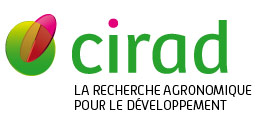Integrating indicator-based and event-based surveillance data for risk mapping of West Nile virus, Europe, 2006 to 2021
Serres K., Erazo D., DesprÃĐaux G., Vincenti-GonzÃĄlez M.F., Van Bortel W., Arsevska E., Dellicour S.. 2024. Euro Surveillance, 29 (44) : 10 p..
DOI: 10.18167/DVN1/ZNVEPK
Background: West Nile virus (WNV) has an enzootic cycle between birds and mosquitoes, humans being incidental dead-end hosts. Circulation of WNV is an increasing public health threat in Europe. While detection of WNV is notifiable in humans and animals in the European Union, surveillance based on human case numbers presents some limitations, including reporting delays. Aim: We aimed to perform risk mapping of WNV circulation leading to human infections in Europe by integrating two types of surveillance systems: indicator-based and event-based surveillance. Methods: For indicator-based surveillance, we used data on human case numbers reported to the European Centre for Disease Prevention and Control (ECDC), and for event-based data, we retrieved information from news articles collected through an automated biosurveillance platform. In addition to these data sources, we also used environmental data to train ecological niche models to map the risk of local WNV circulation leading to human infections. Results: The ecological niche models based on both types of surveillance data highlighted new areas potentially at risk of WNV infection in humans, particularly in Spain, Italy, France and Greece. Conclusion: Although event-based surveillance data do not constitute confirmed occurrence records, integrating both indicator-based and event-based surveillance data proved useful. These results underscore the potential for a more proactive and comprehensive strategy in managing the threat of WNV in Europe by combining indicator- and event-based and environmental data for effective surveillance and public health response.
Mots-clÃĐs : surveillance ÃĐpidÃĐmiologique; virus du nil occidental; santÃĐ publique; fiÃĻvre du west nile; ÃĐpidÃĐmiologie; contrÃīle de maladies; ÃĐcologie animale; maladie transmise par vecteur; santÃĐ animale; facteur de risque; impact sur l'environnement; maladie des animaux; cartographie; culicidae; europe; pays de l'union europÃĐenne; espagne; italie; france; grÃĻce
Documents associÃĐs
Article (a-revue à facteur d'impact)
Agents Cirad, auteurs de cette publication :
- Arsevska Elena — Bios / UMR ASTRE
